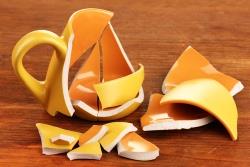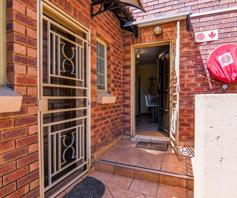Today epoxy glue and putty make fixing chipped or broken crockery and ceramics simple. You can repair a treasured cracked vase, or restore granny's old tea set and put it back into use without anyone even knowing anything was damaged.

If you have a piece of crockery or ceramic that is broken into more than two pieces, plan how to attach each piece to avoid being left with a final piece that cannot be easily fitted in place.
When it comes to fixing broken crockery or ceramics, 5-minute epoxy glue and superglue don't give you enough time to match and adjust a precise fit. For this purpose, a 10-minute epoxy glue is preferred.
As with any project, the most important step in repairing broken crockery or ceramic is to prepare the surface.
If the item has been fixed before, remove old adhesive with a cotton bud soaked in acetone (nail polish remover) or you will find that the new adhesive may not bond.
Clean the pieces with a mixture of mild dishwashing liquid and warm water. Rinse the pieces and let them dry completely.
Use a toothpick, paper clip or a pin tool to apply epoxy glue to one of the broken edges.
Only apply enough adhesive to cover the edge.

When it comes to fixing broken crockery or ceramics, 5-minute epoxy glue and superglue don't give you enough time to match and adjust a precise fit. For this purpose, a 10-minute epoxy glue is preferred.
Too little will leave gaps, resulting in a weak repair, too much will make it difficult to achieve a tight bond.
When handling sharp pieces put gloves on to protect your hands from sharp edges.
Work quickly to join the pieces together with light pressure to squeeze out excess glue.
Any glue that oozes can be removed later using a sharp blade.
Use play dough or prestik to hold the pieces together while the glue cures.
Avoid shifting the pieces; small particles may come loose, ruining the repair. Use a pair of tweezers to apply small broken pieces. Let each joint cure before repairing the next one.

Today epoxy glue and putty make fixing chipped or broken crockery and ceramics simple. You can repair a treasured cracked vase, or restore granny's old tea set and put it back into use without anyone even knowing anything was damaged.
If you have a piece of crockery or ceramic that is broken into more than two pieces, plan how to attach each piece to avoid being left with a final piece that cannot be easily fitted in place.
Remove any hardened glue that has oozed out with a sharp blade. If the glued seam is visible and this is not acceptable to you, some glass paint may be required. Glass or ceramic paints come in a variety of colours, but some mixing may be required for an exact colour match.
Note: Glues, epoxies and adhesives have all sorts of toxic materials that can leach into food, especially when there is salt and acid in the food. Unfortunately, once ceramic or any vessel that holds food is glued, it is not food safe.








